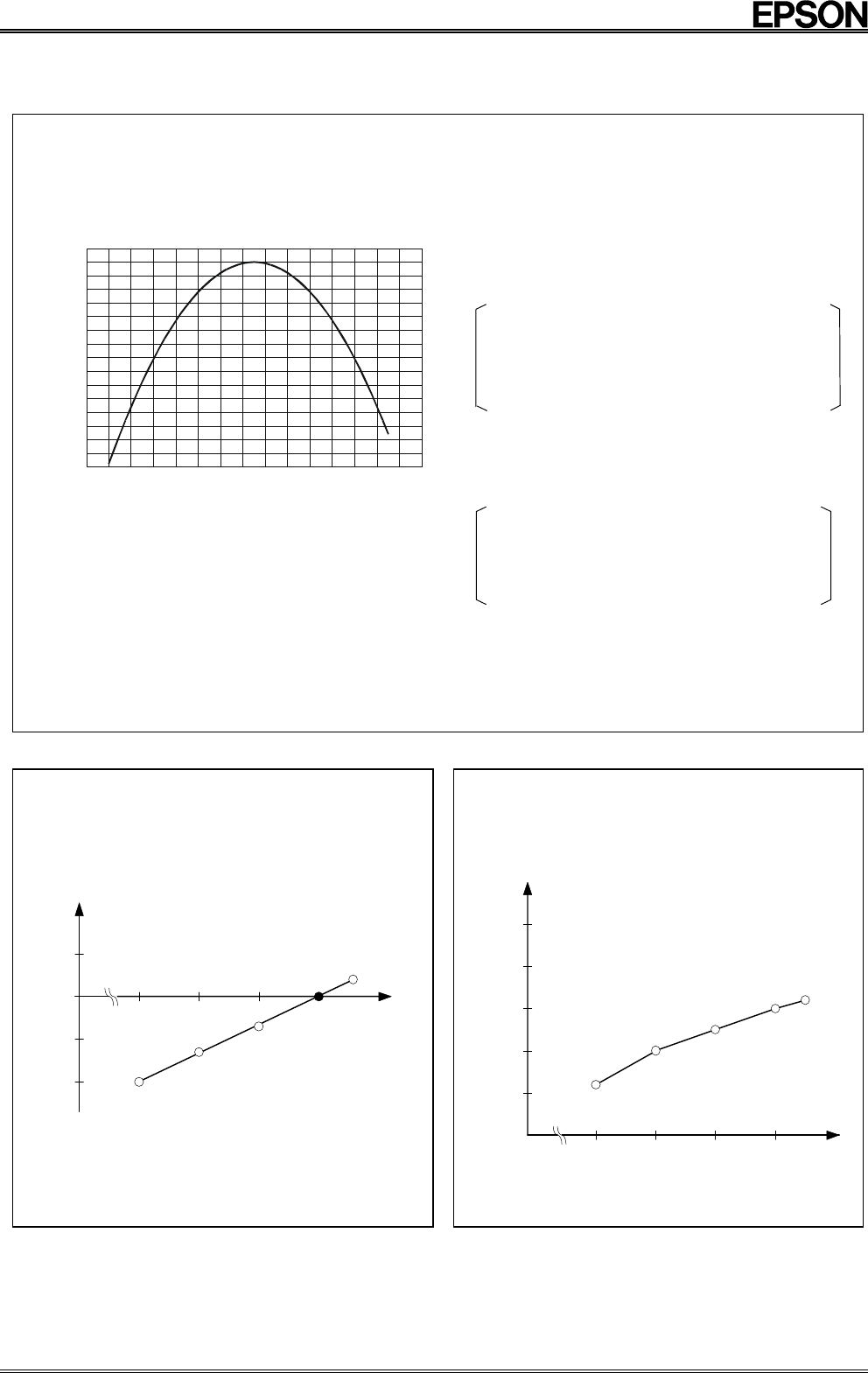
RTC - 4543 SA/SB
Page - 11 MQ - 252 - 03
11. Reference Data
(1) Example of Frequency-Temperature Characteristics
θ
T
= +25
°
C Typ.
α
= -0.035
×
10
-6
/
°
C
2
Typ.
Temperature [°C]
-150
-140
-130
-120
-110
-100
-90
-80
-70
-60
-50
-40
-30
-20
-10
0
+10
-50 -40 -30 -20 -10 0 +10 +20 +30 +40 +50 +60 +70 +80 +90+100
Frequency fT
∆
×
10
-6
Determining the frequency stability (clock accuracy)
1.The frequency-temperature characteristics can be
approximated by the following equation:
∆
f
T
=
α
(
θ
T
-
θ
X
)
2
∆
f
T
: Frequency deviation at any given temperature
α( /°
C
2
)
: Second-order temperature
: Highest temperature(+25
°
C
±
5
°
C)
: Any given temperature
θ
T
(
°
C)
θ
X
(
°
C)
((-0.035
±
0.005)
×
10
-6
/
°
C
2
)
2. In order to determine the clock accuracy, add in the
frequency tolerance and the voltage characteristics.
∆
f/f =
∆
f/f
0
+
∆
f
T
+
∆
fv
∆
f
: Clock accuracy at any given temperature
and voltage (frequency stability)
: Frequency accuracy
∆
T
∆
v
: Frequency deviation at any given temperature
: Frequency deviation at any given voltage
/f
∆
f/f
0
f
f
3. Determining the daily error
Daily error =
∆
f/f
×
86400 (seconds)
With error of 11.574
×
10
-
6
, the error of the clock is
about one second per day.
(2)Example of
Frequency-Voltage
Characteristics
Frequency [
×
10
-6
]
-1.0
0.0
+1.0
2345
Conditions
5 V reference Voltage,
Ta=+25
°
C
-2.0 Supply voltage (V
DD
)[V]
(3)Example of Current Consumption-Voltage
Characteristics
Current consumpiton[
µ
A ]
1.0
2.0
2.0 3.0 4.0 5.0
Conditions
No load, Ta=+25
°
C
Supply voltage (V
DD
) [V]
0.0
Note :
This data shows values obtained from a sample lot.


















